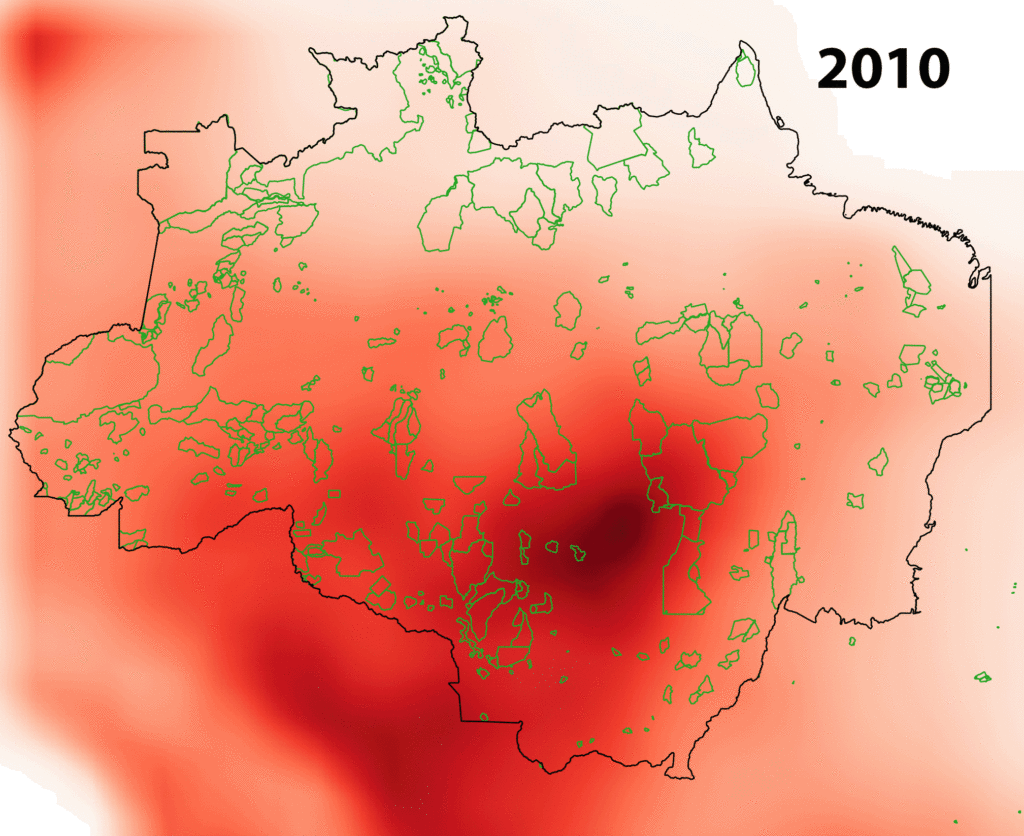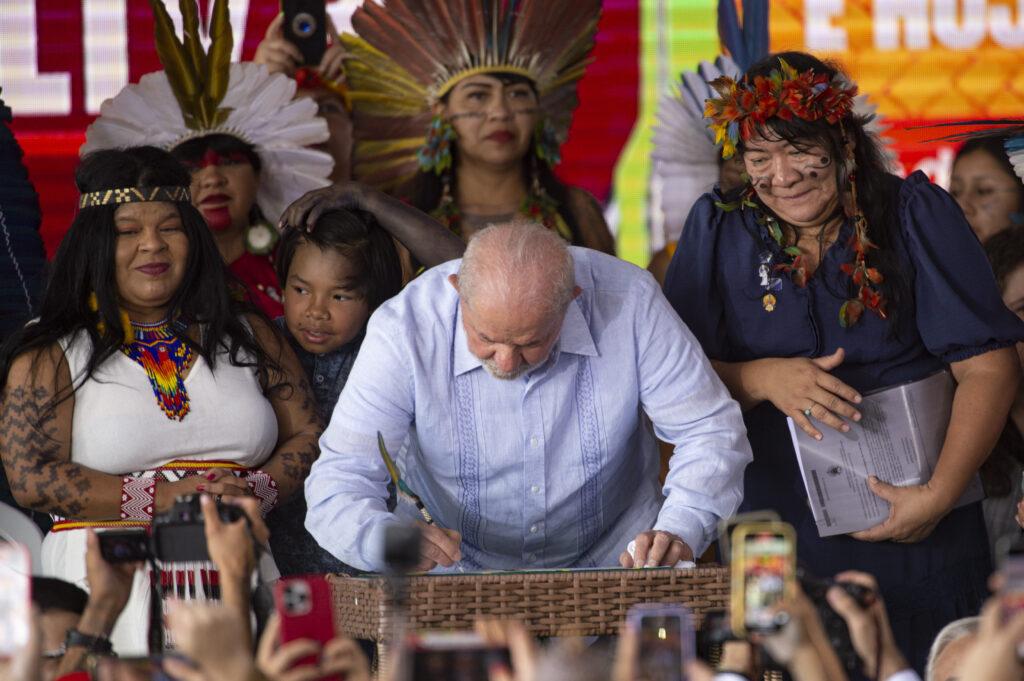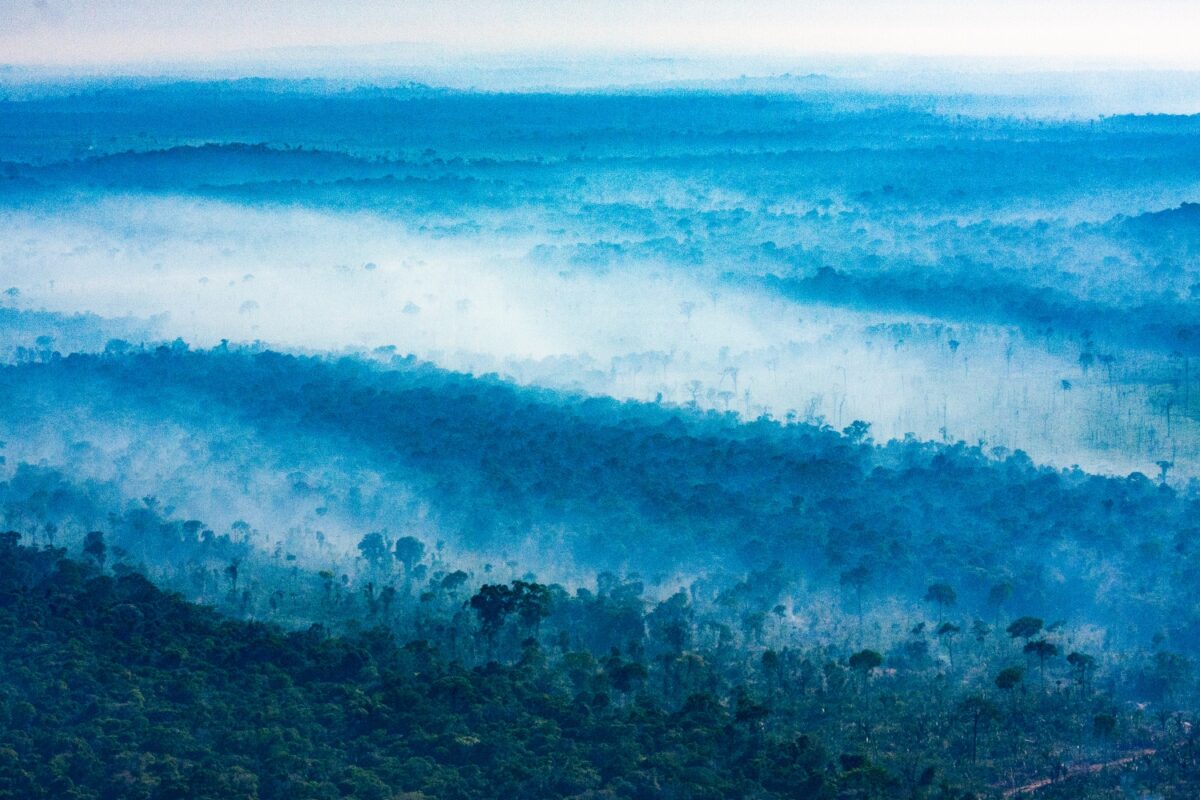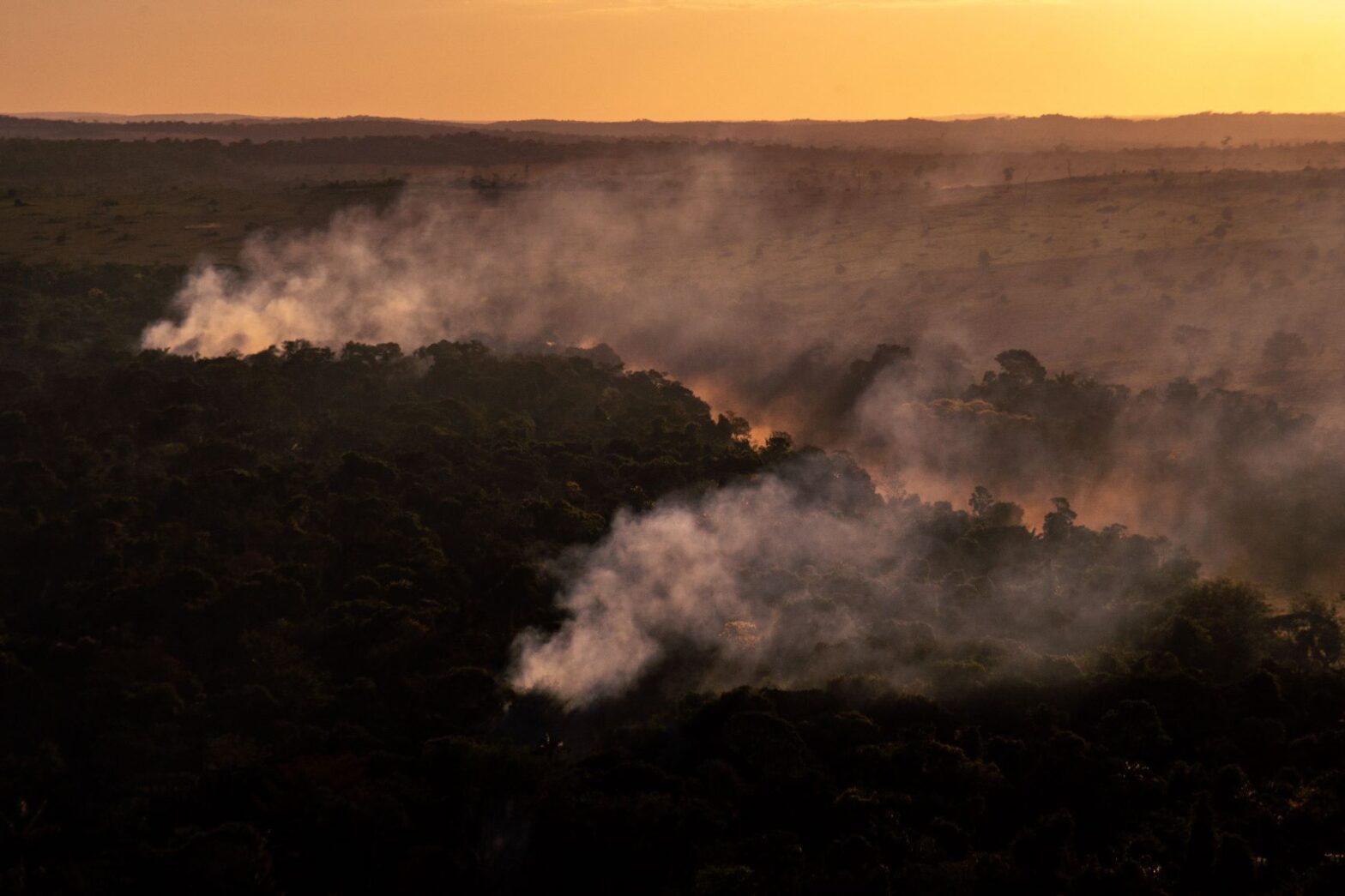The fires are largely responsible for the pollution related to respiratory and cardiovascular diseases. A study shows that the Amazon rainforest is capable of absorbing 26,000 tons of particulate matter per year and that indigenous territories contribute 27% of this total. Preserving them prevents 15 million new cases of illness every year.
“Conserving indigenous territories is a public health issue,” says Paula Prist, lead author of the study published in the journal Communications Earth & Environment and a researcher at the Ecohealth Alliance, an NGO that works with environmental preservation and the prevention of pandemics. Based on the analysis of data from the Legal Amazon: A region that occupies almost half of Brazil’s territory, it covers nine states and has an area greater than that of the Amazonian biome. between 2010 and 2019, the article shows that the forest and indigenous territories: Federal Territories recognized and delimited by the federal government for the maintenance of the indigenous way of life and culture throughout the country. (ITs) absorb pollutants from fires and protect the health of the population, generating savings of US$2 billion for the public system.
During the period analyzed, the forest was able to absorb 26,000 tons per year of the main pollutant related to respiratory diseases, particulate matter. The ITs were responsible for the absorption of 27% of this total, despite occupying only 22% of the Amazon territory.
According to Prist, this higher percentage of absorption is probably due to the service that indigenous peoples provide in keeping the forest standing. A study published in March of 2022 showed that, in the period from 2005 to 2012, the average rate of loss of native vegetation: All the flora that naturally occupies the different biomes of the country according to their soil types, climate, biodiversity and water availability.in the indigenous territories of the Amazon was 17 times lower than in unprotected areas. A survey conducted by the MapBiomas network in April of 2022 also showed that, in the last 30 years, ITs throughout Brazil have lost 1% of their native vegetation, while private areas have lost 20.6%.
By protecting the forest, they reduce carbon emissions and help with the absorption of pollutants, contributing to the prevention of diseases related to these problems (read more about the listed diseases below). “Though these indigenous territories are far from where fires occur – often in the Arc of Deforestation – they are still able to provide services and protect rural and urban populations that reside all throughout the region,” Prist highlights.
Though these indigenous territories are far from where fires occur – often in the Arc of Deforestation – they are still able to provide services and protect rural and urban populations that reside all throughout the region.
Paula Prist, lead author of the study and researcher at the Ecohealth Alliance
The Arc of Deforestation, where the agricultural frontier is advancing upon the southern and eastern edges of the forest, is precisely the region that least absorbs pollutants from the fires in the Amazon. It is also there that the Kayabi ITs are found, in Mato Grosso, Panará, Pará and Sete de Setembro, between Rondônia and Mato Grosso – all of which presented the highest incidence of respiratory diseases out of the Amazonian ITs in the period analyzed.
Furthermore, the study indicates that the fires are a growing concern due to the increasingly dry conditions caused by climate change, with the potential for an increase in smoke-related diseases and deaths.
Patrícia Pinho, a scientist at the Amazon Environmental Research Institute (IPAM) and a member of the Intergovernmental Panel on Climate Change (IPCC), says indigenous territories not only ensure the well-being of humans on multiple scales, but also climate regulation.
“Vulnerability to climate change has color, race, gender and geography. Not only is it a matter of socioeconomic status, but these variables suggest that without adaptation and without transformation on a large scale, the loss of biodiversity and culture of these peoples will become irreversible in a scenario of global warming, compromising a just and prosperous future for all, very much in line with what Dr. Prist just showed in this study,” the scientist says.
Vulnerability to climate change has color, race, gender and geography. Not only is it a matter of socioeconomic status, but these variables suggest that without adaptation and without transformation on a large scale, the loss of biodiversity and culture of these peoples will become irreversible in a scenario of global warming, compromising a just and prosperous future for all, very much in line with what Dr. Prist just showed in this study.
Patrícia Pinho, scientist at IPAM and a member of the IPCC
Meanwhile Dinamam Tuxá, executive coordinator of the Articulation of Indigenous Peoples of Brazil (Apib), considers the study a device for subsidizing the indigenous peoples’ lawsuits and denunciations. “This only demonstrates the need to resume the demarcations, the need for public policies of territorial protection, to encourage the actions of indigenous communities. It just reinforces the entire narrative that the indigenous communities have been championing,” the leader says.
How the study was conducted
Based on data on respiratory and cardiovascular infections recorded on the DataSus platform and by the Indigenous Health Division of the Ministry of Health, the study estimated that the absorption of particulate matter carried out by the forests in indigenous territories prevents 15 million new cases of diseases each year, which would have resulted in an expenditure of US$2 billion annually (about R$9.8 billion, according to exchange rate on Thursday, May 11) for the public health system in the 772 municipalities of the Legal Amazon. This particulate material is a set of pollutants consisting of dust, fumes and all kinds of solid and liquid material that remains suspended in the atmosphere due to its small size.

To arrive at these numbers, the authors analyzed a set of data. First, through a mathematical formula, they calculated the amount of fine particulate matter (PM 2.5, less than 2.5 micrometers in diameter) absorbed by the leaves of temperate forests – the researchers used programs that work with geospatial data and verified the forested area and its ability to absorb pollutants. The same calculation was applied to consider the service provided by the official indigenous territories. In this case, the percentage of pollutant absorption in indigenous territories was also calculated in relation to the total forested area of the Legal Amazon.
Then, after these calculations, the researchers established the relationship between the pollutants and the number of cases of respiratory infections and cardiovascular diseases. This required the use of multivariate regression models: To understand how the health of the Amazonian peoples is related to the quantity and configuration of forest areas present in indigenous territories and municipalities, the study used a multiple regression analysis considering the number of infections as a response variable and the different metrics of the landscape as predictive variables, a set of statistical methods often used by science to measure different variables simultaneously.
As such, the way the increased pollution affects human health was estimated. “We downloaded the data from SUS on the spending for these illnesses that we’re studying for each patient and calculated the relationship,” explains Prist.
The study considered: The number of cases of fire-related illnesses; demographics of the municipalities and ITs based on the census of the Brazilian Institute of Geography and Statistics (IBGE); land use and landscape fragmentation by way of the data provided by MapBiomas; and socioeconomic aspects, using the Gini index: An instrument that measures the degree of income concentration in a determined group. It indicates the difference between the income of the poorest and the richest, an instrument that made it possible to verify the concentration of income in the municipalities of the Legal Amazon. The study chose not to include 2020 and 2021, the years of the Covid-19 pandemic, in order to avoid distortions.
Forest fires are a health problem
Fires are the main source of pollution in tropical regions and the population’s exposure to smoke can lead to respiratory problems, heart disease, stroke, emphysema, lung cancer, bronchitis, asthma and chest pains, as well as chronic lung and heart problems. According to the study, one hectare of burned forest can generate an average cost of US$2 million (about R$9.8 million according to the exchange rate on Thursday, May 11) considering hospitalizations and treatments for respiratory and cardiovascular infections.
Marcia Macedo, a scientist at the Woodwell Climate Research Center, explains that fire depends on three main factors: sources of ignition such as arson; the climate, considering the increase in extreme droughts; and the presence of fuel, such as dry biomass and the invasion of grasses. “Fire is not a natural element of this landscape. It’s a symptom of various anthropogenic actions in the region,” she says.
Fire is not a natural element of this landscape. It’s a symptom of various anthropogenic actions in the region.
Marcia Macedo, a scientist at the Woodwell Climate Research Center
The study indicates that the effects of the fires reach distant places, impacting populations within a 500-kilometer radius of the actual locale of the fire. “When we did the annual average, we saw that there is this trend, and this movement goes westward because the wind currents blow in that direction,” explains Prist.
Pollution traveling from the fires in the Amazon has already provoked shock, as in the episode that occurred on August 19, 2019, when day turned into night in São Paulo. “This pollution doesn’t just stay in the Amazon. It blows south with the winds and damages the health of countless, millions of people outside the Amazon,” says climate scientist Carlos Nobre. “This very backward practice of using fire in Brazilian cattle ranching needs to be completely eliminated. Modern livestock farming does not use fire and livestock farming is the main vector of deforestation and fire in the Amazon,” he adds.
This very backward practice of using fire in Brazilian cattle ranching needs to be completely eliminated. Modern livestock farming does not use fire and livestock farming is the main vector of deforestation and fire in the Amazon.
Carlos Nobre, climate scientist
Though the study highlights the ITs in terms of the savings that the standing forest generates, Paula Prist comments that the entire preserved forest has the same prerogative to absorb pollutants and thus prevent cases of illnesses that would multiply with more deforestation.
Ratification of new ITs
In order to defend the expansion of these areas that protect health, a recent note from the Amazon Environmental Research Institute (IPAM) states that the ratification of the 14 new ITs, announced by Minister of Indigenous Peoples Sonia Guajajara, would be a fundamental movement in the fight against climate change.
The area currently occupied by the 14 indigenous territories that are being proposed for ratification is 873,000 hectares, 780,000 of which are in the Amazon biome, according to IPAM. Their preservation represents a stock of forest carbon equivalent to four years of emissions by industrial processes in Brazil.

However, last month, President Lula (PT) was at the Free Land Camp (ATL), where he ratified six territories, less than the 14 petitions for demarcation forwarded by the National Foundation of Indigenous Peoples (FUNAI). Federal agency created in 1967 and responsible for the execution of policies to protect and promote indigenous rights throughout Brazil’s national territory. Nonetheless, Guajajara stated that the federal government will work together with the Articulation of Indigenous Peoples of Brazil (Apib) to move forward with the ratification of the other territories.
“We hope that now the Brazilian state will present a plan to contain these criminal activities, namely the fires which originate mainly from agribusiness, the advance of large enterprises, people who enter indigenous lands or the surroundings to commit this type of illegal thing,” says Dinamam Tuxá, executive coordinator of Apib.
Report by InfoAmazonia for the project PlenaMata.





